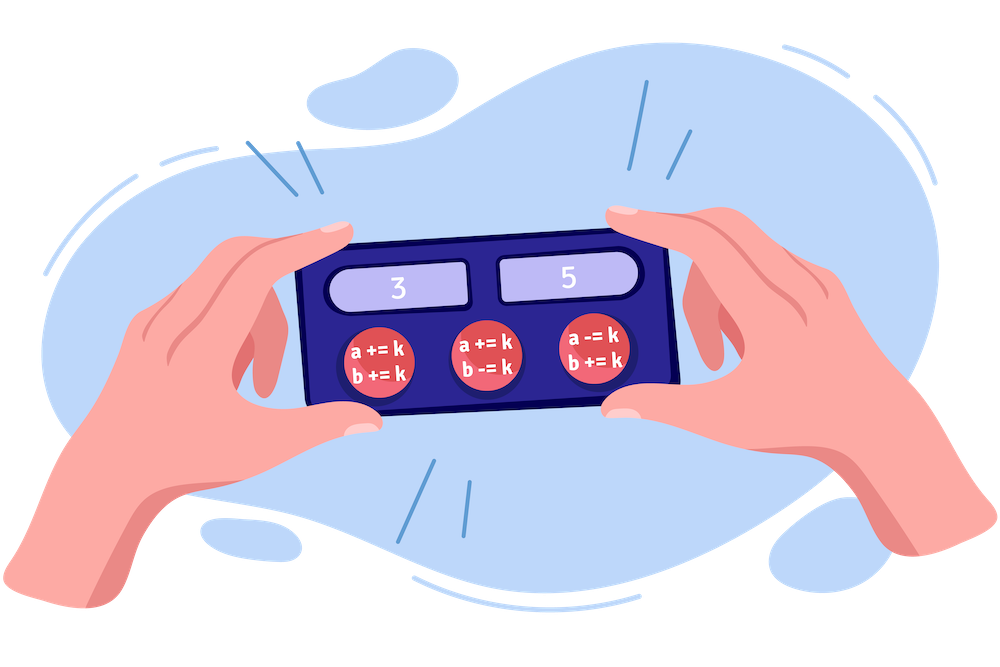CF1556A A Variety of Operations
Description
William has two numbers $ a $ and $ b $ initially both equal to zero. William mastered performing three different operations with them quickly. Before performing each operation some positive integer $ k $ is picked, which is then used to perform one of the following operations: (note, that for each operation you can choose a new positive integer $ k $ )
1. add number $ k $ to both $ a $ and $ b $ , or
2. add number $ k $ to $ a $ and subtract $ k $ from $ b $ , or
3. add number $ k $ to $ b $ and subtract $ k $ from $ a $ .
Note that after performing operations, numbers $ a $ and $ b $ may become negative as well.
William wants to find out the minimal number of operations he would have to perform to make $ a $ equal to his favorite number $ c $ and $ b $ equal to his second favorite number $ d $ .
Input Format
Each test contains multiple test cases. The first line contains the number of test cases $ t $ ( $ 1 \le t \le 10^4 $ ). Description of the test cases follows.
The only line of each test case contains two integers $ c $ and $ d $ $ (0 \le c, d \le 10^9) $ , which are William's favorite numbers and which he wants $ a $ and $ b $ to be transformed into.
Output Format
For each test case output a single number, which is the minimal number of operations which William would have to perform to make $ a $ equal to $ c $ and $ b $ equal to $ d $ , or $ -1 $ if it is impossible to achieve this using the described operations.
Explanation/Hint
Let us demonstrate one of the suboptimal ways of getting a pair $ (3, 5) $ :
- Using an operation of the first type with $ k=1 $ , the current pair would be equal to $ (1, 1) $ .
- Using an operation of the third type with $ k=8 $ , the current pair would be equal to $ (-7, 9) $ .
- Using an operation of the second type with $ k=7 $ , the current pair would be equal to $ (0, 2) $ .
- Using an operation of the first type with $ k=3 $ , the current pair would be equal to $ (3, 5) $ .